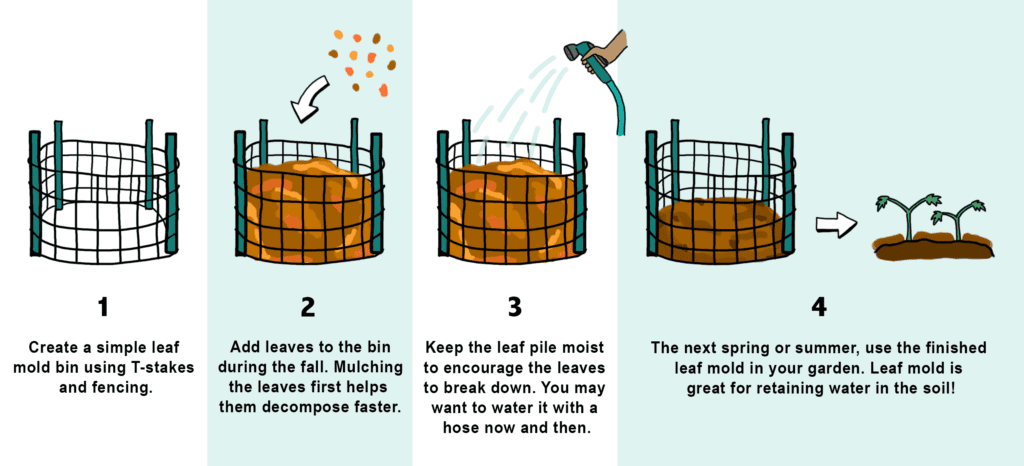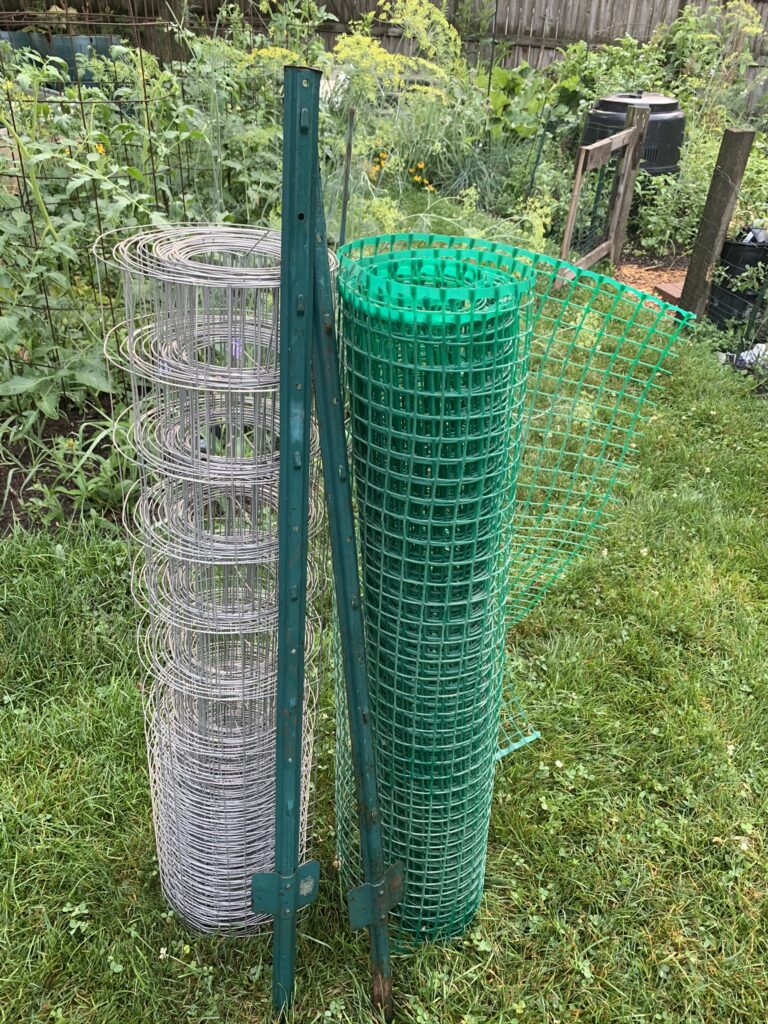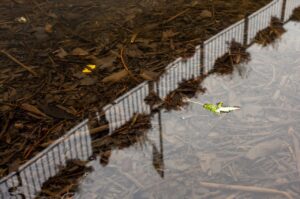Leaves, like all organic materials, contain nutrients. The nutrients in leaves hurt our local rivers but help our lawns and gardens. This is because nutrients encourage plant growth. In streams, excess nutrients cause oxygen-depleting algae to grow, which hurts the fish and insects that live there. In your yard, these nutrients are beneficial since they fertilize plants you want to grow, like grass and garden vegetables.
When it rains, stormwater draws the nutrients out of the leaves similar to a tea bag in water. When leaves are on hard surfaces like streets, stormwater runoff swiftly brings leaves and their nutrients into storm drains. Storm drains funnel the nutrient-rich “leaf tea” into nearby rivers and streams. This spikes local waterways with much more nutrients from leaves than would naturally occur.

Thankfully, you can harness those same nutrients in leaves for the benefit of your yard and garden – turning a negative into a positive! Leaves can be used on your property in three simple ways: leaf mulch, leaf compost and leaf mold.
Leaf Mulch
The simplest way to use leaves is to mulch them into your lawn with a mulching mower. All you need to do is run over the leaves with your mower as you cut the grass. The mulched leaves and grass clippings will fertilize your yard as they decompose. This works best if you don’t have too many trees around your yard. You can also collect the mulched leaves and use them around trees, shrubs, flowers or in the garden.
Leaf Compost
You can also add leaves to your compost bin at home. Composting requires both nitrogen-rich “greens” and carbon-rich “browns.” Use fresh leaves, grass clippings and vegetable scraps for greens and dry leaves for browns. Adding mulched leaves to your compost bin will speed up their decomposition.
Leaf Mold
Leaf mold might not sound appealing, but it is another useful way to use leaves at home! When you compost leaves, you mix the leaves in with other materials, such as vegetable scraps, grass clippings and newspaper. When making leaf mold, you only use leaves.
Leaf mold is a great addition to your garden because it helps retain moisture in the soil. In fact, leaf mold can hold up to 500% of its own weight in water! Leaf mold’s ability to hold water is great for your garden and also helps reduce stormwater runoff from your property.
How to Make Leaf Mold

1. Create a Container for the Leaves
The easiest way to do this is with some T-stakes and fencing. You can use rabbit fencing, chicken wire or plastic mesh fencing (not the netting to keep birds off of your fruiting trees). The size you make it will depend on how many leaves you have in the fall. Ideally you can locate your bin in the corner of your garden. Use four to six stakes to make a rough circle or square about four to five feet in diameter. Attach one end of your fencing material to the first stake by either bending it around the stake or attaching with zip ties or wire. Wrap the fencing around the remaining stakes. Depending on the fencing you use, you may want to go around it twice. Attach the end of the fencing to a stake.

2. Add Leaves During the Fall
Before placing the leaves into the bin or container, shred them by running over the leaves with a lawn mower. Shredding the leaves greatly reduces the amount of time it takes to make leaf mold and allows you to fit more into the bin. Continue to add leaves throughout the fall.
3. Wet the Leaf Pile
The leaves need moisture to decompose, if there is not sufficient rain you can water the pile a few times in the fall.
4. Use the Finished Leaf Mold in Your Garden
By the following spring or summer, the size of the pile should have reduced as the leaves break down. The leaf mold will be ready to add to your garden by the end of the summer. Use leaf mold as a water-retaining mulch layer around your plants or mix it into the soil as you prep your garden in the fall.
Pro-Tip: Plant regular potatoes or sweet potatoes in the spring after the chance of frost has passed into the top layer of the bin. Water the potatoes as needed. Young potatoes can be harvested after the plants finish flowering or mature potatoes after the plants have died back. A great way to get double duty out of the bin. Empty the bin to get ready for leaves again in the fall.
You can repeat this process each year. By using leaves as a resource at home, you benefit your lawn and garden while keeping leaves out of storm drains and local steams.





